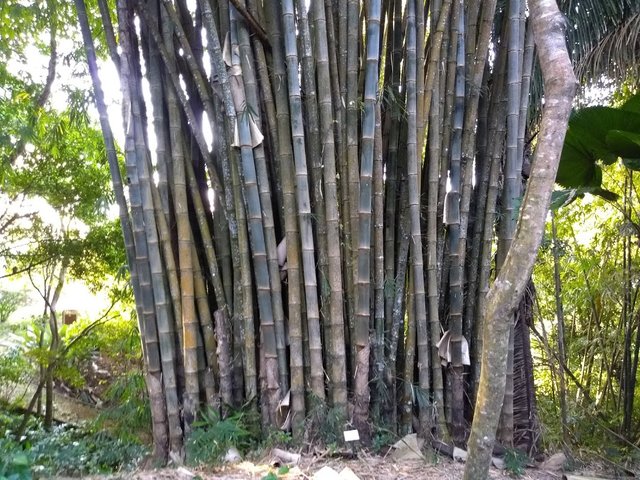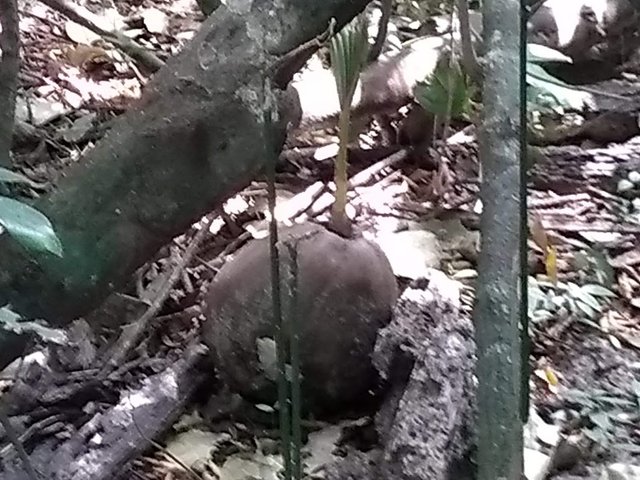Costa Rica - Part 7 - Flourishing Flora
Getting to see the tropical flora of Costa Rica was one of my main reasons for my recent visit to the country. Here is a compilation of photographs of interesting plant species found in the Tulemar Resort area, in the adjacent National Park (Parque Nacional Manuel Antonio), growing at Villa Vanilla, and at the San Jose Marriott Hotel in Costa Rica. All photographs are my own and were taken in January, 2019. Accompanying each photograph is a brief description of each species with a few notes concerning special properties of the plants.

Red ginger - Alpinia purpurata (a member of the Zingiberaceae) growing at the Tulemar Resort.

A pink variant of red ginger grows in the same habitat.
This species contains a number of flavonoids and steroidal glycosides with inhibitory activity against Mycobacterium tuberculosis:
Alpinia purpurata also contains 6-gingerol, the main constituent of Ginger (Zingiber officinale) of the same family. Like many other plant secondary products, described in previous posts, 6-gingerol is derived from intermediates in the lignin biosynthesis pathway.

Alpinia purpurata is mostly grown as an ornamental in the Tulemar Resort, and flower and leaf cuttings are used as decorations indoors.
Other ornamentals and landscpe plants growing at the Tulemar resort include:

Torch ginger - Etlingera elatior of the Zingiberaceae family of angiosperms.

Golden Shrimp Plant - Pachystachys lutea of the Acanthaceae family of angiosperms. White flowers emerge from yellow bracts.

Cigar Calathia - Calathea lutea of the Marantaceae family of angiosperms.

Bamboo Ginger - Costus stenophyllus of the Costaceae family of angiosperms.

Pink Banana - Musa velutina of the Musaceae family of angiosperms.

Hanging Lobster Claw - Heliconia rostrata of the Heliconaceae family of angiosperms.
![]()
Hairy Heliconia - Heliconia vellerigera of the Heliconaceae family of angiosperms.

Lipstick Palm - Cyrtostachys renda of the Arecaceae family of angiosperms.

Giant Bamboo - Dendrocalamus asper of the Poaceae family of angiosperms.

Elkhorn fern or Common staghorn fern - Platycerium bifurcatum of the Polypodiaceae.

African Oil Palm - Elaeis guineensis, a member of the Arecaceae family of angiosperms.
The African Oil Palm has become a major source of revenue for Costa Rica following the decline in banana production due to decades of problems with disease: see A Brief History of African Palm Production in Costa Rica.
I encourage readers to view the satelite images of the region of Costa Rica northwest of Quepos along highway 34. Vast acreage is now devoted to African Oil Palm production: Puntarenas Province, Quepos, Costa Rica (Google Maps).
African oil palm is an extremely valuable source of various oils, vitamin A and vitamin E, and the subject of intensive research in terms of genome structure and potential for yield improvement:
The related species, Royal Palm can be found growing at the Marriott hotel in San Jose, Costa Rica:

Royal Palm - Roystonea regia. Four Royal palms behind the Marriott hotel in San Jose, Costa Rica. The Royal palm has a distinctive smooth, green crownshaft.

The coconut tree - Cocos nucifera, also a member of the palm tree family (Arecaceae) is found on the beaches along the Pacific coast. Here a coconut is germinating near the beach at the Manuel Antonio National Park (Parque Nacional Manuel Antonio).

Psychotria elata commonly known as hot lips or hooker's lips growing at Villa Vanilla.
This species (a member of the Rubiaceae) is a small tree with distinctive red bracts (modified leaves) that emerge before the flower blooms. It is endangered due to rainforest destruction. It has traditionally been used as a medicinal plant, but the active ingredients responsible for these medicinal properties remain to be identified:
In addition to its visual appeal, the plant has provided several medicinal uses. Local inhabitants have learned to make use of both the bark and leaves. These can be used to treat coughs, earaches, and skin rashes. From: Hooker’s Lips
Other species of Psychotria have been found to contain a number of indole alkaloids that are acetylcholinesterase and monoamine oxidase inhibitors:
The related species, Psychotria viridis, is famous for its contribution of psychedelic compound N,N-dimethyltryptamine (DMT) to the drink Ayahuasca:

Balsa Tree - Ochroma pyramidale) of the Malvaceae family growing in the Tulemar Resort. The wood of this tree is notorious for being very soft and light weight. I used to use it as a kid to make model aircraft.

Red Mangrove - Rhizophora mangle a member of the Rhizophoraceae family, growing in the intertidal zones at Manuel Antonio National Park (Parque Nacional Manuel Antonio). This species is extremely tolerant to salt water and anaerobic conditions associated with submergence. The plant produces long stilt roots that elevate the plant above water and permit oxygen exchange with the air even though lower roots may be submerged and hypoxic.

This species also produces seeds that prematurely germinate on the tree (a phenomenon known as vivipary).

The seeds develop a large, spear-like primary taproot while still attached to the tree, and some speculate that this may permit the seed to penetrate into the mud when the seed eventually is shed.
Previous articles in this series:
Costa Rica - Part 1 - The Sloth Institute Costa Rica
Costa Rica - Part 2 - Scintillating Sunsets
Costa Rica - Part 3 - Superb Scenery
Costa Rica - Part 6 - Black Pepper, Chili Pepper and Cinnamon
This post has been voted on by the SteemSTEM curation team and voting trail in collaboration with @utopian-io and @curie.
If you appreciate the work we are doing then consider voting all three projects for witness by selecting stem.witness, utopian-io and curie!
For additional information please join us on the SteemSTEM discord and to get to know the rest of the community!
Thank you!
Hi @davidrhodes124!
Your post was upvoted by Utopian.io in cooperation with @steemstem - supporting knowledge, innovation and technological advancement on the Steem Blockchain.
Contribute to Open Source with utopian.io
Learn how to contribute on our website and join the new open source economy.
Want to chat? Join the Utopian Community on Discord https://discord.gg/h52nFrV
Thank you!